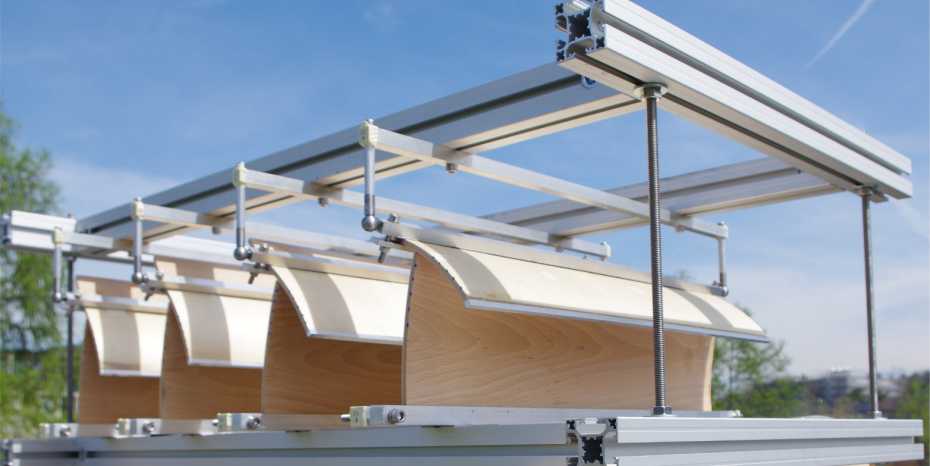A doctoral student at the Federal Institute of Technology (ETH) in Zurich has developed an innovative shading system that requires no sensors, motors or even electricity. According to an ETH Zurich statement, Chiara Vailati’s system, which she developed during her doctoral project at ETH Zurich’s Institute for Building Materials, more closely resembles pinecones, whose scales react to changes in humidity.
Pinecone scales consist of two connected layers that autonomously contract to different degrees as the humidity decreases. Vailati transferred this principle to bilayered wooden planks.
“Like its natural model, the double layers of wood makes use of changes in humidity throughout the day,” said Vailati.
In the humid morning air and at night, the planks are flat and vertical. At midday, when the sun is high and the air is drier, they bend noticeably to provide shade. Striped patterns in the wood together and coupled bilayered planks significantly increase the reaction time.
ETH Zurich has already patented Vailati’s invention. What’s more, her shading device was counted among the best 20 inventions by ETH Zurich’s technology transfer office (ETH transfer) last year and can be licensed.

More News
Meet with an expansion expert
Our services are free of charge and include:
- Introduction to key contacts in industry, academia, and government
- Advice on regulatory framework, taxes, labor, market, and setting up a company
- Custom-made fact-finding visits, including office and co-working space